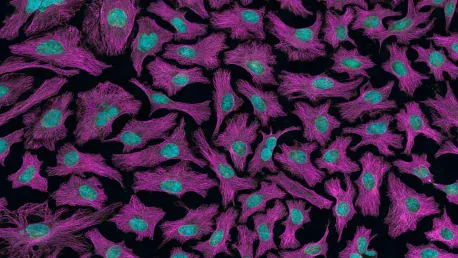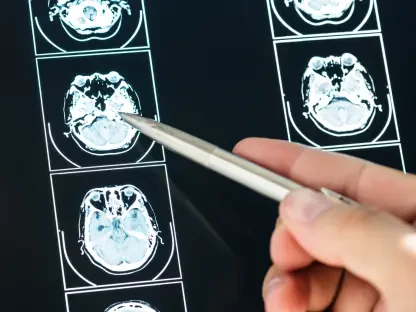Blood tests have come a long way since the 19th century, evolving into essential tools for diagnosing and monitoring various health conditions, including cancer. In breast cancer care, blood tests play a crucial role, providing valuable insights that complement other diagnostic methods.
The Role of Blood Tests in Breast Cancer Care
Current Applications of Blood Tests
Blood tests are integral to medical diagnostics, including cancer detection and monitoring. In breast cancer care, while they cannot definitively diagnose the disease, they support diagnosis and monitor treatment progress. Routine blood tests like liver function tests and platelet counts help monitor a patient’s overall health and response to treatment. Specific tests, such as the Carcinoembryonic Antigen (CEA) test and the Cancer Antigen 27.29 (CA 27.29) test, detect proteins that may indicate the presence of breast cancer, providing doctors with crucial information and acting as diagnostic aids in identifying potential cancer markers.
The CEA test measures the level of carcinoembryonic antigen in the blood, a protein that may be elevated in individuals with certain cancers, including breast cancer. Elevated CEA levels can indicate cancer progression or recurrence, offering insights into treatment effectiveness. Similarly, the CA 27.29 test monitors levels of the cancer antigen 27.29 protein, often found in higher concentrations in individuals with breast cancer. Elevated CA 27.29 levels can serve as an early warning sign of cancer recurrence, prompting further diagnostic investigations. Although these tests provide important information, they must be used with imaging tests and other diagnostic methods for a comprehensive assessment.
Liquid Biopsy: A Game Changer
Liquid biopsy technology has advanced significantly, allowing for cancer detection through a simple blood draw. Tumors shed circulating tumor cells (CTCs) and circulating tumor DNA (ctDNA) into the blood, providing profound insights into a person’s specific breast cancer type. The Cancer Genome Project and sequencing technology advances have enabled the identification of cancer-specific genetic mutations through blood analysis, making liquid biopsies highly sensitive and specific for breast cancer diagnosis and early detection.
An essential advantage of liquid biopsies is their non-invasive nature, offering a less painful and more accessible alternative to traditional tissue biopsies. Liquid biopsies allow for frequent monitoring of tumor dynamics, enabling real-time adjustments in treatment plans. By analyzing ctDNA, doctors can identify genetic mutations driving cancer growth, leading to more targeted and effective therapies. Furthermore, liquid biopsies can detect minimal residual disease (MRD), providing early indications of recurrence. As research continues, these tests hold the potential to become an integral part of breast cancer screening, diagnosis, and personalized treatment strategies.
Early Detection and Screening
The Importance of Early Detection
Early detection is crucial for positive outcomes in all cancers, including breast cancer. Researchers aim to develop non-invasive, widely available blood tests for early cancer detection. Although no blood test currently replaces mammograms, tests like the CEA and CA 27.29 serve as diagnostic aids. Multi-cancer early detection (MCED) tests are gaining interest for their potential to detect multiple cancers by identifying cell-free DNA and cancer-specific proteins in the blood. Early detection allows for timely treatment interventions, significantly improving survival rates and overall outcomes for breast cancer patients.
Detecting cancer at an earlier stage enhances the chances of successful treatment and reduces the need for aggressive therapies. Blood tests with the potential to identify cancer biomarkers at their earliest stages could revolutionize cancer screening, making it less invasive and more accessible. While mammograms are the current gold standard for breast cancer screening, incorporating blood tests as supplementary tools could enhance overall screening accuracy. Researchers continue to explore the viability of such tests, conducting studies to validate their diagnostic sensitivity and specificity. The development of reliable early detection methods remains a top priority in advancing breast cancer care.
Promising Multi-Cancer Early Detection Tests
Galleri by GRAIL and CancerSeek are MCED tests that leverage DNA shedding and methylation processes to identify cancer presence. These tests, while promising, require further diagnostic procedures to pinpoint the origin of cancer indicators. Galleri, developed by GRAIL, utilizes advanced genomic sequencing and machine learning algorithms to analyze DNA methylation patterns, helping identify multiple types of cancer. The Galleri test detects abnormal methylation patterns that indicate cancer, offering insights into its potential origin. Similarly, CancerSeek, another innovative MCED test, detects genetic mutations and protein biomarkers associated with various cancers, including breast cancer.
CancerSeek, approved by the FDA as a companion diagnostic for breast cancer, identifies genetic alterations in numerous genes, including the PIK3CA gene. These advancements highlight the potential for more accurate and early cancer detection. While these tests are not yet definitive on their own, their integration into a broader diagnostic framework could enhance early detection efforts. Positive results from MCED tests necessitate follow-up diagnostic procedures, such as imaging or tissue biopsy, to confirm and localize cancer indicators. The ongoing refinement and validation of these tests pave the way for future breakthroughs in cancer screening, offering hope for earlier and more precise diagnoses.
Treatment Decision-Making and Monitoring
Personalized Treatment Plans
Liquid biopsy technology and ctDNA analysis are pivotal in tailoring personalized treatment plans. By analyzing ctDNA, doctors can make informed decisions about targeted therapies, immunotherapies, and clinical trials. Monitoring ctDNA levels during and after treatment provides real-time insights into tumor progression and prognosis, allowing for dynamic treatment plan adjustments to enhance efficacy. Liquid biopsies offer a more dynamic and responsive approach to breast cancer care, enabling personalized and adaptive treatment strategies based on individual tumor profiles.
Personalized treatment plans based on ctDNA analysis can lead to improved outcomes and reduced side effects. By identifying specific genetic mutations driving the cancer, doctors can select therapies that directly target these alterations, increasing the likelihood of treatment success. Additionally, ctDNA analysis can reveal the development of resistance to certain treatments, prompting timely adjustments to alternative therapies. This approach minimizes unnecessary treatments and focuses on interventions that are more likely to be effective, contributing to a more individualized and patient-centric approach to breast cancer care.
Real-Time Treatment Adjustments
Ongoing research explores using ctDNA analysis to adapt treatment plans dynamically. If ctDNA levels do not decrease as expected, adjustments can be made to improve treatment outcomes, offering a more personalized approach to breast cancer care. Monitoring ctDNA levels allows doctors to assess treatment efficacy in real-time, enabling timely changes to therapeutic strategies. This approach ensures that patients receive the most appropriate and effective treatments based on the evolving behavior of their tumors.
Real-time treatment adjustments based on ctDNA monitoring are particularly valuable in managing metastatic breast cancer. As the disease progresses, tumors can develop new genetic mutations and resistance mechanisms. Liquid biopsy analysis allows for the continuous monitoring of these changes, providing insights into emerging treatment resistance. By adapting treatment plans in response to ctDNA findings, doctors can address resistance early, potentially prolonging remission and improving overall survival rates. This dynamic approach to treatment highlights the transformative potential of liquid biopsies in enhancing breast cancer care and improving patient outcomes.
Predicting Recurrence and Drug Development
Predicting Breast Cancer Recurrence
Liquid biopsies’ high sensitivity can predict breast cancer recurrence. Tests like the Signatera™ Residual Disease Test analyze ctDNA for minimal residual disease (MRD) detection, providing early warnings of recurrence. The Signatera™ test, granted “Breakthrough Device” approval by the FDA, tracks unique tumor mutations over time, alerting doctors to the presence or absence of disease, enhancing patient monitoring and care. Detecting MRD at its earliest stages enables prompt intervention, potentially preventing full-blown recurrence and improving long-term outcomes for breast cancer patients.
The ability to predict recurrence through ctDNA analysis represents a significant advancement in post-treatment monitoring. By identifying even small amounts of residual cancer cells, liquid biopsies offer a more sensitive method for assessing recurrence risk compared to conventional imaging techniques. This early detection capability can guide doctors in making informed decisions about additional treatments or surveillance strategies, ensuring timely and appropriate interventions for at-risk patients. The ongoing validation of these tests continues to enhance their utility in clinical practice, offering new hope for improved post-treatment monitoring and recurrence prevention.
Enhancing Drug Development
Liquid biopsies also play a crucial role in drug development. Clinical trials benefit from this technology for patient selection and monitoring, expediting and enhancing drug development pipelines. For example, the FoundationOne® Liquid CDx test identified suitable patients for the drug inavolisib (Itovebi®) clinical trials, leading to FDA approval of the test as a companion diagnostic, showcasing the synergy between blood tests and drug development. The integration of liquid biopsy technology into clinical trials enhances the precision and efficiency of patient selection, ensuring that participants are more likely to respond to the investigational drugs.
Monitoring patients’ ctDNA levels during clinical trials provides valuable real-time insights into treatment efficacy and potential resistance mechanisms. This data allows researchers to assess candidate drugs’ performance accurately and make necessary adjustments to trial protocols. The resulting expedited regulatory approvals highlight the potential of liquid biopsies to streamline drug development processes. As new targeted therapies and immunotherapies emerge, incorporating liquid biopsy technologies into clinical trials will continue to enhance the development and approval of innovative breast cancer treatments, ultimately benefiting patients with more effective and personalized therapeutic options.
Contributions of BCRF Investigators
Advancing Liquid Biopsy Technology
The Breast Cancer Research Foundation (BCRF) investigators are at the forefront of leveraging liquid biopsy technology. Their research includes guiding treatment selection, developing more sensitive techniques, and analyzing cfDNA in patients with breast cancer-associated gene mutations. BCRF investigators’ efforts are instrumental in refining liquid biopsy methodologies, leading to more accurate and informative blood tests for breast cancer detection and monitoring. Their work contributes to advancing the understanding of tumor biology and the genetic factors involved in cancer progression.
The BCRF investigators’ focus on improving liquid biopsy sensitivity and specificity aims to develop tests that can serve as early screening tools. By analyzing cell-free DNA (cfDNA) from patients with mutations in breast cancer-associated genes, researchers hope to detect cancers at more curable stages. These advancements hold promise for improving early detection and reducing the burden of advanced breast cancer. Ongoing studies aim to validate these techniques in larger patient cohorts, ensuring their robustness and clinical utility. The BCRF’s dedication to innovative research plays a vital role in advancing liquid biopsy technology and enhancing the overall landscape of breast cancer care.
Innovative Research Efforts
Blood tests have significantly progressed since the 19th century, transforming into vital tools for diagnosing and monitoring many health conditions, including cancer. These tests have become indispensable in modern medicine, providing critical information that supports other diagnostic methods.
In breast cancer care specifically, blood tests are pivotal. They offer valuable insights that can help detect the disease, assess its progress, and monitor the patient’s response to treatment. Blood tests can reveal tumor markers, which are substances often found at elevated levels when cancer is present. These markers can help in identifying breast cancer early, even before other symptoms appear.
Furthermore, blood tests can assist in identifying specific types of breast cancer by analyzing genetic markers. This information is crucial for developing personalized treatment plans tailored to an individual patient’s needs. For instance, tests can determine if a patient is a candidate for targeted therapies designed to attack cancer cells with minimal harm to healthy cells.
Overall, blood tests, while traditionally simple and quick, have advanced to become complex diagnostic tools. They play an essential role in the early detection, classification, and ongoing management of breast cancer, thus significantly improving patient outcomes and offering hope for more effective treatments.









